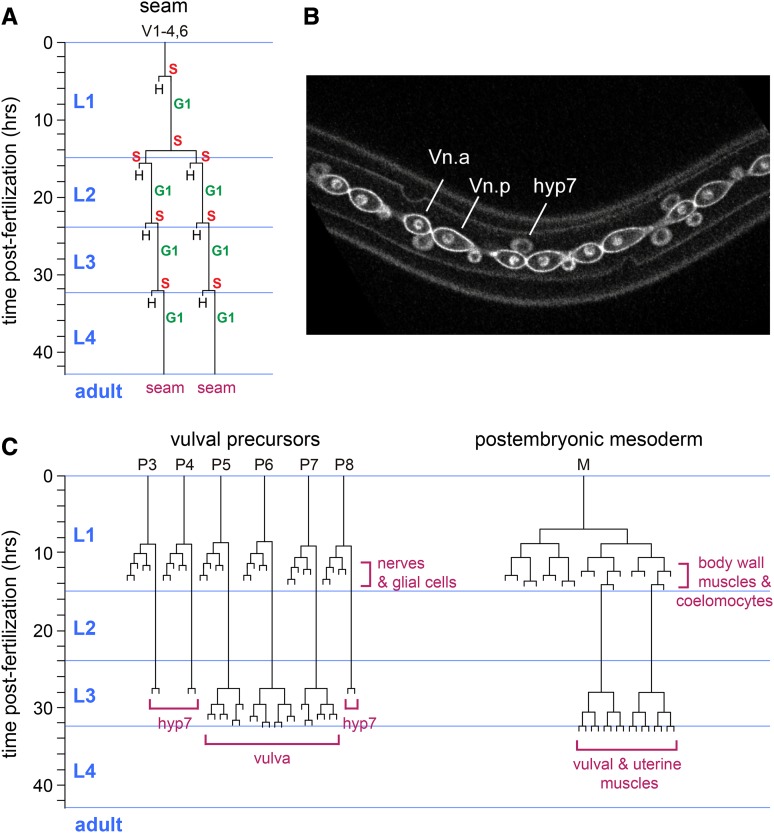Figure 2.
Examples of invariant postembryonic cell lineages in C. elegans. (A) Lineage of the stem-cell like epithelial seam cells. The y-axis indicates the time (hours) of development from hatching; vertical lines represent seam cells, horizontal lines are cell divisions, and an H denotes the hyp7 fusion fate; anterior is to the left. S indicates DNA synthesis and G1 temporal quiescence. Note the repeated rounds of asymmetric cell divisions, separated by a single proliferative division at the L1/L2 boundary. (B) Immunofluorescence microscopy image of a transgenic animal expressing cell membrane (GFP::PHPLC1δ) and DNA (GFP::H2B) markers in the seam cell lineage (controlled by the wrt-2 promoter). The animal just completed asymmetric seam cell divisions in the second larval stage (L2). Indicated is a seam cell that just divided, of which the anterior daughter (for simplicity named Vn.a) will fuse with the general epidermis (hyp7), while the posterior cell Vn.p will remain present as a seam cell. Also marked is the nucleus of the hyp7 syncytium. (figure courtesy of S. van der Horst). (C) Cell lineages for the vulval precursor cells that give rise to neurons and glial cells in the L1 larval stage, and the vulva in the L3 stage; and the postembryonic mesoderm lineage that gives rise to body wall muscles, coelomocytes, and sex myoblasts in the L1 stage, and vulval and uterine muscles in the L3 stage.

